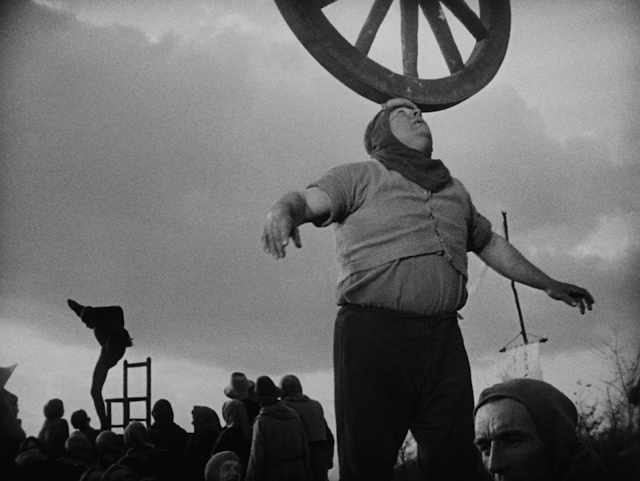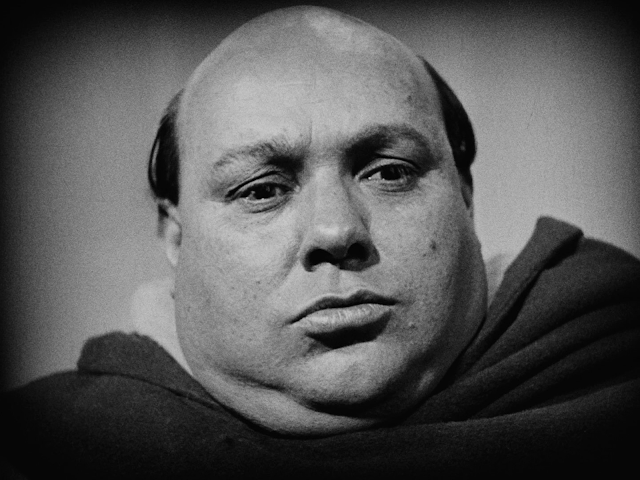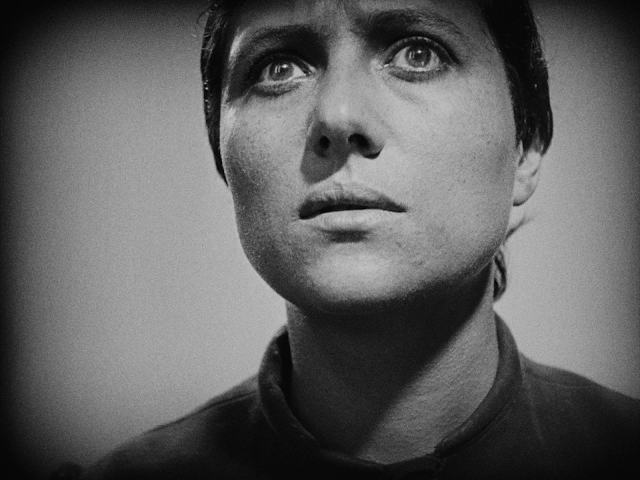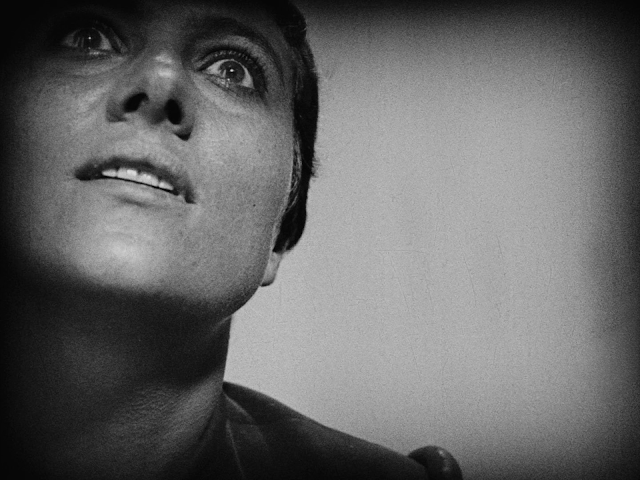Week Eight: The Passion of Joan of Arc (1928)
Writers: Joseph Delteil and Carl Theodor Dreyer
Cinematographer: Rudolph Mate
Starring: Renee Jeanne Falconetti (Jeanne d’Arc), Eugene Silvain (Pierre Cauchon), Andre Berley (Jean d’Estivet), Maurice Schultz (Nicolas Loyseleur), Antonin Artaud (Jean Massieu), Gilbert Dalleu (Jean Lemaitre), Jean d’Yd (Nicholas de Houppeville), Ravet (Jean Beaupere), Camille Bardou (Lord Warwick)
You can watch the entirety of the movie for free on YouTube
You can watch the entirety of the movie for free on YouTube
Danish director Dreyer’s The Passion of Joan of Arc (originally released as La Passion de Jeanne d’Arc) is a movie unlike any other, a silent movie that takes complete advantage of the medium's benefits to tell its story. It is a movie that could not have been made with sound, and indeed all future films, all with sound, focusing on Joan of Arc have paled in comparison to this masterwork. Silent film is predominantly a visual medium, in which symbolism and faces are used to tell the story because there isn’t any spoken dialogue to do the trick. The Passion of Joan of Arc takes this aesthetic to the nth degree, conveying whole worlds of emotion and story almost entirely through these tools.
The film is based on the actual trial record of the real-life Joan of Arc (1412-1431), a young French girl who believed God was calling her to lead France in victory against England during the Hundred Years’ War (1337-1453). Joan, often dressed as a man, led the French army in several campaigns, including a key victory at the Battle of Orleans, which earned her the moniker “The Maid of Orleans.” Joan was eventually captured by French who were supportive of England (fifteenth-century politics were very different from what they are now) and put on trial for heresy, which is where the film picks up.
Because the film is based on the trial record, and not a literary adaptation, Dreyer sought a realism in the portrayal of fifteenth-century France, to a point at least. Even today, most period films glamourize history, prettying it up, but not so here. The most obvious way that this goal is achieved is the presentation of the actors. Little to no makeup was used, which was extremely uncommon at the time, and therefore all the flaws, as well as the natural beauty of the human face, is on display:
There can be no doubt that the nuance of the actor’s performances are aided by completely uninhibited faces, free from even the subtle restrictions makeup can cause. Additionally, the costumes are all period accurate as well as some of the uglier sides of medieval society, such as bloodletting:
There can be no doubt that the nuance of the actor’s performances are aided by completely uninhibited faces, free from even the subtle restrictions makeup can cause. Additionally, the costumes are all period accurate as well as some of the uglier sides of medieval society, such as bloodletting:
While the film pays particular attention to historical detail, there is also quite a bit of stylization within the cinematography and mise-en-scene of the film. The twenties were the heyday for German Expressionism and Joan is no exception:
Additionally, Dreyer had the set built to be connected and extended, meaning that one room really led to another and the whole thing had both an interior and exterior. This set was not built to look exactly like it would during Joan’s trial and has several Expressionistic touches littered throughout that make no architectural sense but add a great deal to the effectiveness of the film:
In the role of Joan, Dreyer cast a French stage actress Renee Jeanne Falconetti, who was appearing at the time in a light comedy. Falconetti had never acted on the screen and was not a famous stage actor, and yet her performance in The Passion of Joan of Arc has been hailed by many to be one of, if not the best film performances ever. Even more remarkably, Joan would also be Falconetti’s final film role as well as her debut; after the film’s release she returned to the stage and died in 1946. It is notable that she was a stage actor because the difference between stage acting and the extreme close-ups of this film is as different as two types of acting can be.
Given that, it is hard to understate just how incredible her performance is, with just her face Falconetti conveys a massive range of emotion, feeling, and thought:
 |
| Joan of Arc was run through a gamut of emotions during her trial, Falconetti's face is our window into her experience. |
The camera plays a very important role in the film, it is our window into the emotion and suffering of Joan, not just through her face but also how the camera and frame are positioned, showing us her discomfort, panic, fear, joy, confusion, longing, and ecstasy.
 |
| The camera not only gives us a glimpse into Joan's mind but also conveys her uncomfortable situation |
Dreyer re-wrote the language of cinema for this film, eschewing established techniques such as establishing shots (the shot that sets up the wider context of the scene), long shots (a shot that places individuals in their surroundings), and normal visual relationships between shots, instead focusing almost entirely on close-ups, often in the extreme, and medium shots.
After You Watch the Movie (Spoilers Below)
Sunrise, which we watched last week, is also a very visual film but goes about it in an entirely different manner, utilizing long takes and multiple exposures, whereas The Passion of Joan of Arc focuses intently on the faces of the actors as well as overt symbolism in order to get across the story and more importantly the emotions and themes of the film.
This is a film, more so than almost any silent film, that is built on images alone. Take for example the manipulative Pierre Cauchon, who presents a forged letter from Joan’s king, Charles VII, in order to gain her trust and in turn lead her down the path of false confession. If the forging of the letter is not clear, the images involved in their exchange make his false intentions clear.
 |
| The camera reveals Pierre Cauchon's true intentions... |
Later, the camera conveys Joan’s fear and panic in two scenes, both of which involve spinning, a reference to her mind spinning with emotion. In the first scene, in the torture chamber, the camera cuts between shots of Joan’s face, the impassive judges, and the implements of torture. As this montage builds, the camera returns repeatedly to the spinning wheel which moves progressively faster as Joan begins to be overcome, eventually fainting but not giving in and signing the false document.
 |
| A montage of torture devices and unfriendly faces, all the while the wheel spins faster and faster... |
Later, while laying on the bed, Joan is offered communion, which fills her with happiness, but then the judges stipulate that she must first sign the confession. The importance of communion with God is made very clear in this scene, both through the devastation on Joan’s face when it is taken away as well as the camera that spins around the room, eventually ending with Joan’s righteous denunciation of her accusers.
 |
| The cross is always there for Joan in times of crisis, including a final bit of clarity in her last moments. |
The Passion of Joan of Arc relies heavily on symbolism, none more obvious than that of the cross that appears throughout the film as a comfort to Joan in her most trying moments.
The film is rife with other references to the crucifixion of Jesus Christ and how it compares to Joan’s martyrdom and the belief that those who are martyred share in the sufferings of Christ and that he is their suffering with them.
 |
| The skull reminds Joan of her mortality but is also a reference to Golgotha, the place of the skull. |
 |
| Joan's crown of thorns... |
 |
| ...eventually reminds her of Christ's suffering, causing her to recant her false confession. |
 |
| The sign over the stake, like Christ's "King of the Jews" sign. |
 |
| The cross and Joan's stake, the final shot of the film. |
Ultimately though, despite all the symbolism and techniques, the unique and incredible brilliance of The Passion of Joan of Arc is in the faces and how they tell the story of the ways Joan changed the heart, both of her accusers and the French people.
When she finally does receive communion, right before her execution, we see Joan’s ecstasy and true faith, which has a profound effect on those around her. Additionally, her courage in recanting her false confession, even when it means death, as well as how she faces death, with courage and gentleness, even handing the executioners rope back to her when it falls off of her wrist.
 |
| The change of heart that Joan's accusers experience is written on their faces. |
 |
| The burning of Joan starts as a festive occasion... |
 |
| ...before quickly turning to a time of mourning... |
 |
| ...and tragedy. |
Because it is definitively a product of the silent era and was made in 1928, after sound had arrived, The Passion of Joan of Arc is a film that was never really imitated or repeated. The visual language of the film was influential on many works that followed it, and it is a prime example of the Expressionistic style that was brought back in film noir; however, there aren’t really other films like this. Joan was also influential in another forties movement, neo-realism, which often used natural light, minimal makeup, and non-professional actors but took the aesthetic a step further by focusing mostly on lower-class individuals and eschewing stylized visuals.
See Also
The Master of the House (1925) dir. Carl Theodor Dreyer
An earlier Dreyer film, quite different than Joan but remarkable in its own way. It is a satire about the relationships in a Danish family.
Vampyr (1932) dir. Carl Theodor Dreyer
Dreyer’s follow-up to Joan, again a very different film, and not just because it is a horror film. Incredibly haunting visuals and atmosphere.
Watch it for free on YouTube
Watch it for free on YouTube
Let me know what you think either here or on Twitter @bottlesofsmoke



























































Comments
Post a Comment